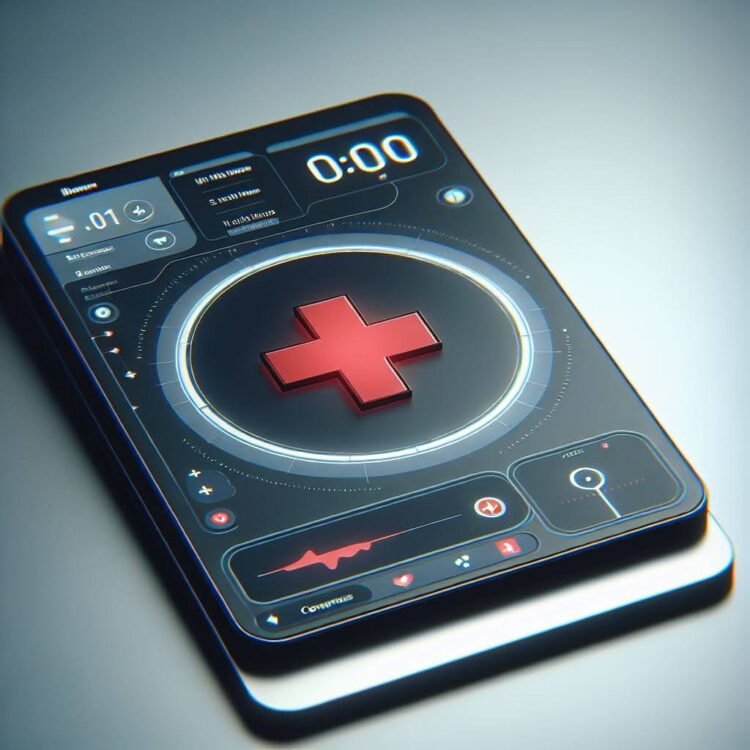The journey through addiction is often a dark and isolating one, characterized by intense cravings, debilitating withdrawal symptoms, and a profound sense of hopelessness. The path to recovery can feel like navigating a dense fog, where the destination is obscured and the next step uncertain. For those bravely battling addiction, the question of “When will I feel better?” can be a relentless and demoralizing mantra, fueling the very cycle of relapse they desperately seek to break free from. Fortunately, the landscape of addiction treatment is undergoing a significant transformation, with advancing healthcare technology emerging as a powerful ally, offering concrete tools to alleviate suffering, promote safety, and rekindle the flame of hope.
One of the most significant ways technology is revolutionizing addiction recovery is by providing individuals with a more tangible understanding of their progress and a clearer vision of when relief might arrive. The agonizing uncertainty of withdrawal is a major barrier to sustained sobriety. The physical and emotional discomfort can feel endless, leading individuals to question if they will ever truly feel themselves again. This despair can be a potent trigger for relapse, as the immediate relief offered by substance use becomes a tempting escape from the seemingly interminable pain.
However, innovative technologies are beginning to address this crucial pain point. Wearable sensors, for instance, can track vital signs like heart rate variability, sleep patterns, and even subtle physiological indicators of stress and craving. Coupled with sophisticated algorithms and personalized data analysis, these devices can provide individuals with real-time insights into their body’s response to withdrawal. Imagine an individual able to see a tangible decrease in their resting heart rate or an improvement in their sleep quality displayed on their phone, providing concrete evidence that their body is healing and adapting. This objective data can act as a powerful antidote to the subjective experience of suffering, offering a glimmer of light in the darkness and reinforcing the belief that the discomfort is temporary and progress is being made.
Furthermore, mobile applications designed for addiction recovery are incorporating features that track symptom severity and mood fluctuations. By consistently logging their experiences, individuals can identify patterns and gain a clearer understanding of the ebb and flow of their withdrawal process. Some apps even utilize predictive analytics, drawing on aggregated data and individual user input to provide a more informed estimate of when acute withdrawal symptoms might subside and when they can expect to experience a more stable emotional state. While these are estimations and not guarantees, the very act of having a projected timeline can offer a sense of control and hope, replacing the overwhelming feeling of endless suffering with a more manageable timeframe. This shift from a vague hope to a data-informed expectation can be incredibly empowering, bolstering motivation and reducing the likelihood of relapse driven by the belief that relief will never come.
Beyond offering a clearer timeline for feeling better, technology is also playing a crucial role in promoting safety, particularly when it comes to the delicate and often dangerous process of tapering off addictive substances. Sudden cessation of certain substances, like alcohol or benzodiazepines, can lead to severe and potentially life-threatening withdrawal symptoms. Proper tapering, guided by medical professionals, is essential to minimize risks and increase the chances of successful detoxification. However, the process can be complex and requires meticulous adherence to a prescribed schedule.
Technology is stepping in to streamline and enhance the safety of tapering. Digital platforms can provide individuals with personalized tapering schedules, complete with reminders for medication dosages and virtual check-ins with healthcare providers. These platforms can also track adherence to the tapering plan, alerting both the individual and their healthcare team if adjustments are needed. This level of precision and real-time monitoring significantly reduces the risk of complications arising from improper tapering.
Moreover, telehealth platforms are making expert medical guidance more accessible than ever before. Individuals undergoing tapering can connect with their doctors or addiction specialists remotely, receiving immediate support and addressing concerns without needing to travel to a physical clinic. This is particularly beneficial for those in rural areas or those with limited mobility. The ability to have regular virtual consultations allows for closer monitoring of withdrawal symptoms and prompt intervention if any concerning developments arise, ensuring the tapering process remains safe and effective. By providing structure, reminders, and readily available expert guidance, technology is empowering individuals to navigate the challenging process of tapering with greater confidence and significantly reducing the risks associated with self-management or uncontrolled withdrawal.
The confluence of these technological advancements directly addresses a significant driver of relapse: the disbelief that things will ever improve. The psychological toll of addiction is immense, and the repeated experience of withdrawal and the perceived impossibility of lasting sobriety can erode hope and foster a sense of fatalism. When individuals feel trapped in a cycle of suffering with no end in sight, the allure of immediate relief offered by substance use can become overwhelming.
However, when technology provides tangible evidence of progress and a clearer understanding of the recovery timeline, it directly challenges this ingrained disbelief. Seeing their physiological markers improve, tracking their symptom reduction, and adhering to a safe tapering plan all contribute to a growing sense of self-efficacy and a renewed belief in their ability to recover. The data-driven approach replaces the subjective experience of despair with objective markers of healing, fostering a more optimistic outlook and strengthening the resolve to stay on the path to recovery.
Furthermore, technology is facilitating the development of innovative therapeutic interventions. Virtual reality (VR) is being used to create immersive environments that simulate real-life triggers and teach coping mechanisms in a safe and controlled setting. Mobile apps are incorporating mindfulness exercises, cognitive behavioral therapy (CBT) techniques, and peer support networks, providing accessible and personalized therapeutic tools. These advancements empower individuals to actively engage in their recovery process, develop healthier coping strategies, and build a strong foundation for long-term sobriety.
In conclusion, the advancements in healthcare technology are not merely gadgets and apps; they represent a fundamental shift in how we approach addiction recovery. By providing individuals with data-driven insights into their progress, promoting safer tapering practices, and fostering a renewed sense of hope, technology is directly addressing the core challenges that often lead to relapse. The ability to see tangible evidence of healing and gain a clearer understanding of the recovery timeline can be transformative for individuals struggling with addiction. It empowers them to persevere through the difficult early stages, knowing that relief is on the horizon. As technology continues to evolve, its potential to further revolutionize addiction treatment and empower individuals on their journey to recovery is immense, offering a beacon of hope in what can often feel like an insurmountable struggle. By embracing these innovations, we can create a more supportive, effective, and ultimately, more compassionate approach to helping individuals reclaim their lives from the grip of addiction.
For more information visit www.ibogaineclinic.com or call 1-800-818-4511













